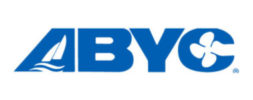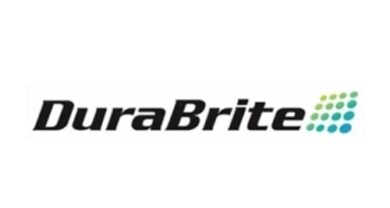Raw material costs affecting paints sector
Combined, John Ludgate and Jim Seidel have almost four decades of experience in the paints and coatings segment of the marine industry. But never have they seen such spiraling costs of raw materials, especially copper prices.
“Sales-wise, we had a very good year in 2005,” said Ludgate, vice president of marketing for Pettit Paints. “But the theme of our story is still the same as it was last year, even worse, and that is the skyrocketing costs of raw materials.”
“The raw materials costs are killing us. It’s like playing Russian roulette,“ explained Seidel, assistant marketing manager for Interlux, who has been in the business for more than 17 years. “We never, ever thought we’d have to watch copper prices on a daily basis, but that’s what we’ve been doing lately. Copper prices for years were very steady, but now it seems like you’re looking at the latest prices more than once a day.”
Ludgate, who spent 16 years at Interlux before taking over as VP of marketing for Pettit six years ago, said his company was forced to raise its prices effective March 1.
“After more than 20 years in the business, we’ve never had a price increase in what we consider the heart of our busiest season,” Ludgate said. “Last June, we paid $1.30 per pound for copper and last week (mid-February) it was $2.30 per pound. When you consider our paints are roughly 70 percent copper and many have as much as eight pounds of copper in the paints, well that raw material cost alone has gone up $8 per. And that does not include the other raw material cost increases.
“Basically, copper prices are out of control and, unfortunately, the prognosis isn’t very optimistic, either, as far as copper prices decreasing any time soon. I guess it’s like the price of gasoline. I can remember paying $1 a gallon for gas, but I don’t see that going back to that level ever again.”
Raw materials costs are the common lament elsewhere in the paints and coatings sector of the industry as well.
Erik Norrie, chief executive officer of New Nautical Coatings and Sea Hawk Paints in Clearwater, Fla., agreed with Ludgate that sales in ’05 had been great, but the profit margin went down considerably.
“We just have to adjust right now,” Norrie said, citing the rising cost of copper and other raw materials. “It’s tough when you have to tell your customers you’re going to have to increase prices by 20 percent, but you have to do it. Fortunately, most of them are aware of the rising copper costs so they understand.
“We’ve tried to maintain level pricing over the years, but when copper goes from $1.30 to $2.30 in barely eight months’ time, you have to do something, especially when your products contain as much as 75 percent copper.”
At Philadelphia Resins, Kristy Redstreake said sales in 2005 “were OK, but not what we had hoped for. It did not meet our expectations, but we definitely have higher expectations for 2006, at least reaching our goals if not exceeding them.
“Like everyone else,” said Redstreake, who handles sales and marketing for the company, a subsidiary of Illinois Tool Works, “we faced an awful lot of raw material price increases in the last year or so. I’ve been here since the year 2000 and I’ve never seen it skyrocket so fast. It’s been very tough on the marine industry, at least our area of it, and has been for more than a year now.”
Nevertheless, perhaps Norrie summarized the immediate future best.
“Although we’re relatively small by comparison (to Interlux and Pettit), I think our outlook for 2006 is much better than ’05. We’re expecting an increase in sales of about 40 percent. Last year, our sales increased by 34 percent and we’ve maintained a 30-percent sales increase for the last 12 years,” Norrie said.
Most of the aforementioned companies will unveil new and improved products in 2006 as well.
NEW NAUTICAL/SEA HAWK PAINTS
The company will offer a handful of new products, including 1280 Marine Paint Stripper, Monterey, Islands 77 Plus, 1290 Solvent-Free High-Build Epoxy and S-90 Low VOC De-Waxing Etch.
Unlike solvent-based products that could pose environmental and health issues, the 1280 Marine Paint Stripper is a water-based stripper that contains no harsh solvents, yet removes many types of marine paints.
Monterey is a solvent-free antifouling formula designed to give the best protection against all types of marine fouling; while Islands 77, unveiled midway through 2005, is an alternative to tin-based antifouling paints and is tin free. The new epoxy is for use over fiberglass and the S-90 Etch is a water-based organic compound that contains no harsh chemicals and promotes good adhesion for primers and anti-foulants.
PETTIT PAINTS
Ludgate said Pettit recently received clearance for one of its new products from the Environmental Protective Agency and displayed it for the first time at the recent Miami International Boat Show.
“We’ve called it AlumaSpray and it comes in an aerosol can,” Ludgate explained. “Basically, it’s for spraying and protecting underwater metals such as props and the like. The new product will definitely be out in time for the spring season and we think it will be a big hit.”
Ludgate believes Vivid, which Pettit had tremendous success with in 2005, also should have a good year in 2006. It is a dual biocide that can be mixed using different formulas to create a variety of bright colors, not only for boat bottoms, but also for trailers and dry-stored boats.
“Pretty much as we expected, Vivid has been a tremendous success for us,” Ludgate said. “It comes in a pure white and a lot of boaters, especially sailboaters, like the brightness of it. It’s really been a home run for us because it appeals to so many different segments of the market.”
ITW PHILADELPHIA RESINS
“We started four new products late in 2005 and we didn’t get a chance to promote them as well as we’d have liked,” said Redstreake. “The one we’re most excited about is our PolyDura, a specialty adhesive for polyurethane material.”
The others, Redstreake said, are Marine Tec Penetrating Epoxy, Deck Traction Wax, a non-slilp coating for boat decks that will actually give them a UV protection, and O2 Spot Remover.
“I think there’s a movement into the more environmentally friendly protective products,” Redstreake said. “Eventually, I think it’s going to be forced upon everyone in the marine industry, but for good reason. Although we’re not looking to branch out, we are definitely looking at some other materials. We deal mainly with the weekend warriors, the do-it-yourselfers, and we get lots of calls from them.”
INTERLUX
Based in New Jersey, Interlux and Pettit dominate the paints and coatings segment of the marine industry, according to Seidel.
“We’ve been the No. 1 Bottom Paint company for a long time,” said Seidel, “but our boat-care line is the newest we have. That was a big change for us. It has been a year of quiet expansion with no big, blockbuster product launches.”
The boat-care line includes more than a half dozen products, including teak restorer, stain remover, marine waxes, boat soap and the like.
But one thing about this segment of the industry that concerns Seidel, as well as Norrie of New Nautical, is the ever-decreasing number of boatyards up and down the East Coast.
“Eventually, what is going to hurt us is the closing of marinas and turning them into condominiums up and down the coast,” Seidel said. “Everywhere you look, as a guy gets older and wants to retire from the boatyard business, the real estate developers are just waiting for them to turn their couple of acres into 100 condos along the waterfront.”
Norrie, too, agreed with Seidel.
“One major change we’ve seen and it looks like a trend in the state of Florida, is boatyards turning into condominiums,” Norrie said. “We’ve lost five or six boatyards alone for this reason, redevelopment into condos, here in Florida. I think it means two things: People are going to start having a harder time to get their boats repaired, or worse, people will stop buying boats because there won’t be anywhere to get them and keep them soon if this trend keeps up.
“I think that’s the biggest worry for people in the marine business,” warned Norrie.




